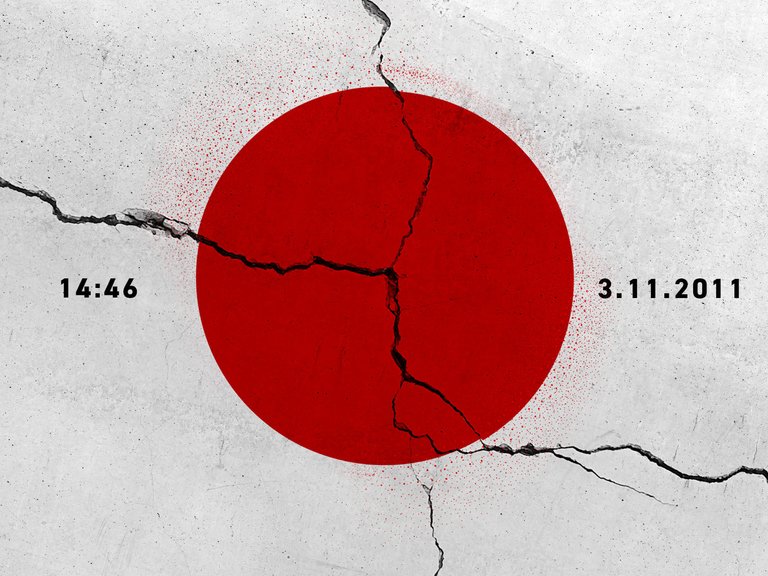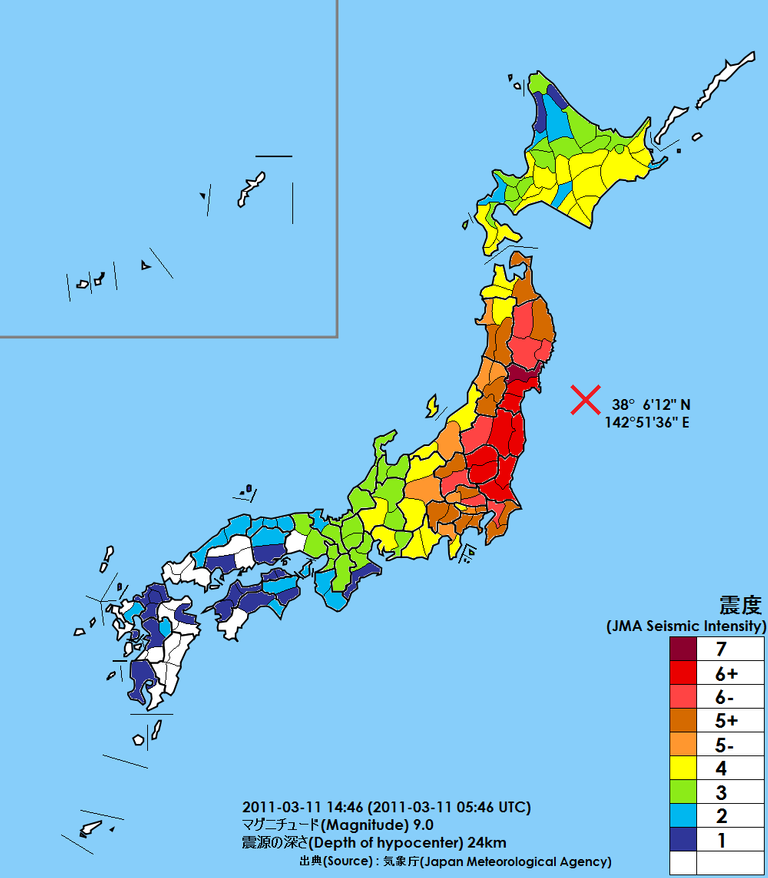3/11 - A Moment of Silence
Today is the anniversary of the Tohoku earthquake, a 9.0/9.1 behemoth that trigger a devastating tsunami which killed thousands and triggered the second largest nuclear accident in history. 19,759 people were confirmed dead, 6,242 injured, and as of this writing 2,553 people are still missing.
A moment of silence as you read this, please.

Offically known as the 2011 Tohoku Earthquake and Tsunami (Tōhoku-chihō Taiheiyō Oki Jishin, 東北地方太平洋沖地震) or more shortly as The Great East Japan Earthquake (Higashi nihon daishinsai, 東日本大震災), the quake hit at 2:46pm local time and lasted six minutes, a unusually long time and what must have felt like an eternity for those involved. It was the most powerful earthquake ever recorded in Japan and the fourth most powerful in the world.
It was so intense that people all over Japan felt it. 200 km away in Tokyo it was strong enough to panic people. A friend of mine was at the top of a skyscraper in Tokyo and he reported that it was swaying back and forth so violently that everyone in his office was scared. People in my city, 400km away felt it and the city offically claimed some damage from it. Here is a map showing how it was measured all over Japan. You can see that even in the farthest point of Kyushu 1200 km away they could feel it.

The amount of energy released by the quake was calculated to be 1.9x10^17 joules, enough energy to power Los Angeles for an entire year. Parts of Japan shifted by as much as 2.4 meters closer to North America. The Earth's axis shifted by 10 to 25 cm and the rotation of the planet sped up, shortening the day by 1.8 microseconds.
Aftershocks continued for for over a year. There were 1887 of them, 80 of those registering at over 6.0 and one at 7.9
The Tsunami
The first waves from the tsunami hit about 15 minutes after the quake. Some reports say it was as little as eight. Because of the closeness of the epicenter to the coast, there was little time to warn people so many were caught completely unaware. The waves reached heights of 40 meters (131 ft) in some places. Can you imagine having that come towards you? Many of the cities along the coast had sea walls, but none of them were built high enough to protect against such an extreme tsunami.
Cars, people, houses were all washed away. Hundreds of evacuation sites were washed away. It was cold when it hit, 0 degrees Celsius, so many who did survive the initial tsunami died of exposure.
Please don't watch the following video if you are easily disturbed and don't want to see death, because most people in the video and everyone in those cars surely died.
228,863 are living in exile from their homes which were destroyed, either still in temporary housing or having been permanently relocated.
There was also damage from the tsunami in the Philippines, Guam, in Russia, even as far as Oregon, Vancouver, and Chile. The tsunami also caused several icebergs to be broken off the Sulzberger Ice Sheet in Antarctica, 13,000km away. Not only did the tsunami travel the entire Pacific, but wreckage also did. In April 2012 a Japanese motorcycle washed up in British Columbia, Canada. Ub 2015 remains of a boat destroyed in the tsunami was discovered off the coast of Oregon.
We won't cover the Fukushima nuclear disaster, but the tsunami led directly to that as well.
Aftermath
Japan has long been watching plate movement off the coast of Tokyo, preparing for the Tokai quake which is expected to decimate central Japan. That may be an overstatement on my part, but it's not much of one. The Tokai quake is expected to be very very very bad, in large part because the majority of the Japanese population lives where it is expected to hit.
But whereas Japan is somewhat prepared for the Tokai quake, they were caught completely by surprise when the Tohoku quake hit. While that area was known for earthquakes, they didn't expect anything major, an 8.0 max. This may have been part of the reason why the area was not better prepared.
One good result from the Tohoku quake is it gave seismologists and other researchers an incredible amount of data to use to better prepare for future quakes. It's a small good point to a horrible disaster, but maybe the data they got can help save lives in future quakes.
Pray for Japan
There was a 2012 documentary about the event that was very good. You can watch it here:
❦
 |
David LaSpina is an American photographer and translator lost in Japan, trying to capture the beauty of this country one photo at a time and searching for the perfect haiku. |
I really hope the Japanese government will take care of the victims truly.